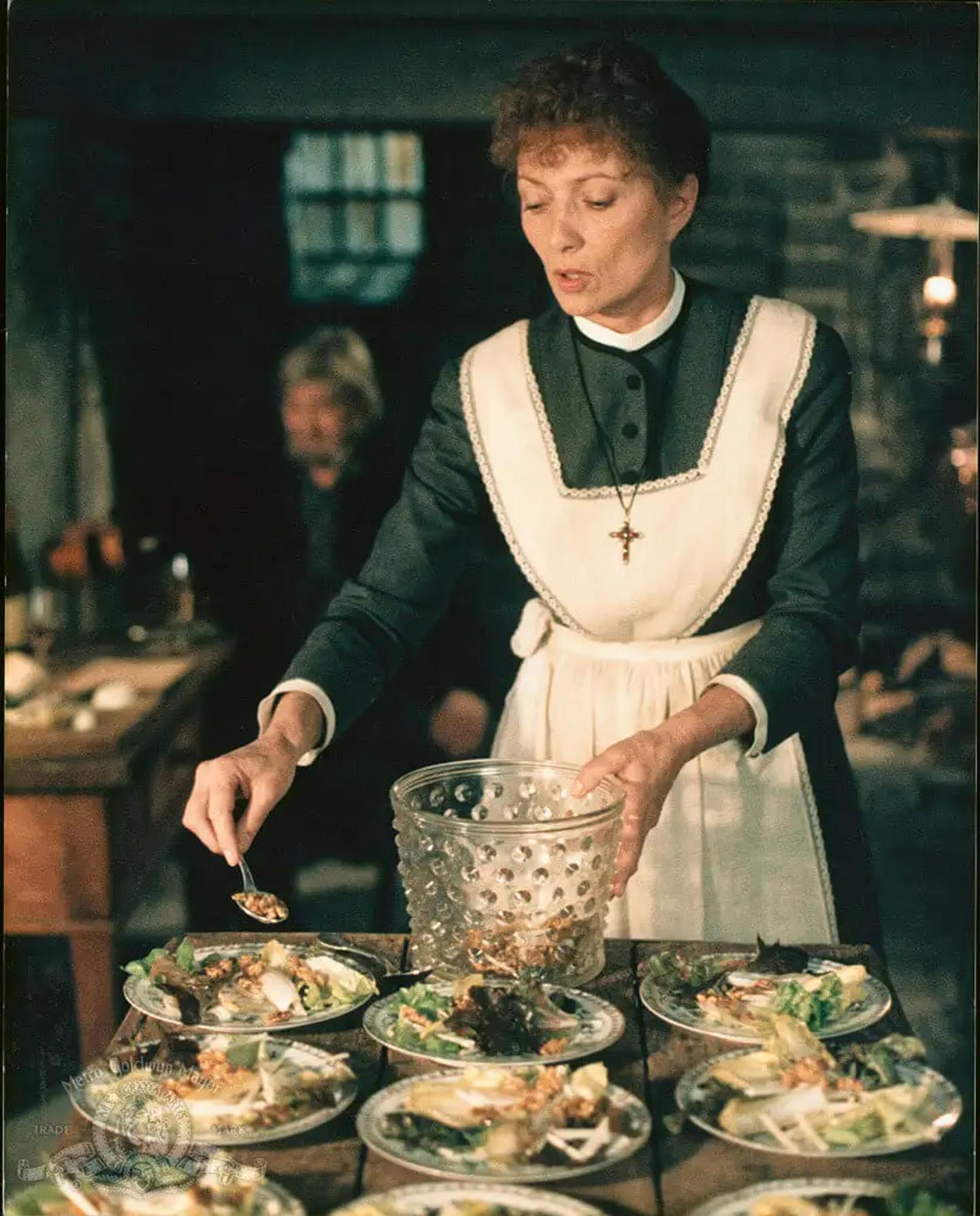

Christmas is a cherished time to gather with family and loved ones, often centring on the sharing of food. While today it’s celebrated globally, its origins trace back to ancient pagan rituals marking the winter solstice and, more prominently, to Christianity’s celebration of their massiah’s birth. This time of year, and its rich layers of historical significance are reminiscent of the remarkable film Babette’s Feast (1987), directed by Gabriel Axel.
Based on a short story by Karen Blixen, this exceptional film won the Academy Award for Best Foreign Language Film in 1988. Today, Babette’s Feast is considered a timeless classic in discussions of cinema and gastronomy. The story follows Babette (Stéphane Audran), a refugee and master chef. Fleeing Paris amid the Franco-Prussian War of 1871, she arrives in a small village on the rugged coast of Jutland, Denmark. Here, she finds sanctuary in their devoutly austere, Protestant community, and becomes their cook.

However, Babette’s graciousness and generosity soon raise suspicion among the villagers, who fear she may threaten their strict spiritual discipline. Her culinary talents, stand in stark contrast to their bland, joyless meals, building a narrative disconnect between her and her hosts. The film’s slow beginning and emphasis on religious themes may feel heavy for some viewers, but Babette’s presence challenges this.
When the titular dinner scene finally unfolds, the villager’s austerity is revealed to be integral to the film’s larger meditation on the transformative power of art, and hospitality, expressed through the universal language of cuisine. This pivotal moment draws a profound parallel between cooking and eating as acts of religious experience or spiritual awakening. Viewed through a contemporary lens, the film also resonates with current political themes, emphasising the importance of welcoming others, embracing diversity, and using food to bridge the gaps between people.

Babette’s ‘feast’, in question, is a sumptuous French dinner she prepares for the congregation as a farewell gift. The feast becomes a fascinating battleground where Protestant austerity and French culinary opulence collide in an emotional crescendo. The result is one of the most stunning sequences in cinema history—an immortal moment that solidifies the film’s legendary status.
We see the preparation of the feast and all the attention to detail, care, and devotion that comes from someone cooking with all their heart and soul. Babette’s dishes are so extraordinary that they evoke feelings of pleasure and wonder in the villagers, who initially interpret these gastronomic delights as sinful, even suspecting a devilish influence at play.
Yet, despite their reservations, they continue eating, enthralled. As the meal progresses, something extraordinary happens: their rigid moral convictions begin to soften, spiritual barriers crumble, and judgment fades. The self-denial that had defined their lives gradually dissolved, leaving behind a sense of connection, joy, and gratitude. Through the act of cooking and eating, a profound transformation takes place—one that is nothing short of magical.
This article is a contribution from one of the participants of The Gramounce Food & Art Alternative MA 2024-25. Their writing is inspired by one of our seminars, or responds to a similar field of interest within food & art.

João Pedro Soares is a filmmaker, writer, and researcher currently pursuing a PhD in artistic Studies at NOVA-FCSH in Lisbon. His doctoral research explores the intersection of ecology and contemporary Portuguese documentary cinema.
João is a participant of the 2024-2025 Food & Art Alternative MA (online), currently on a work-exchange with The Gramounce.
